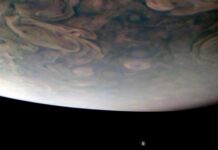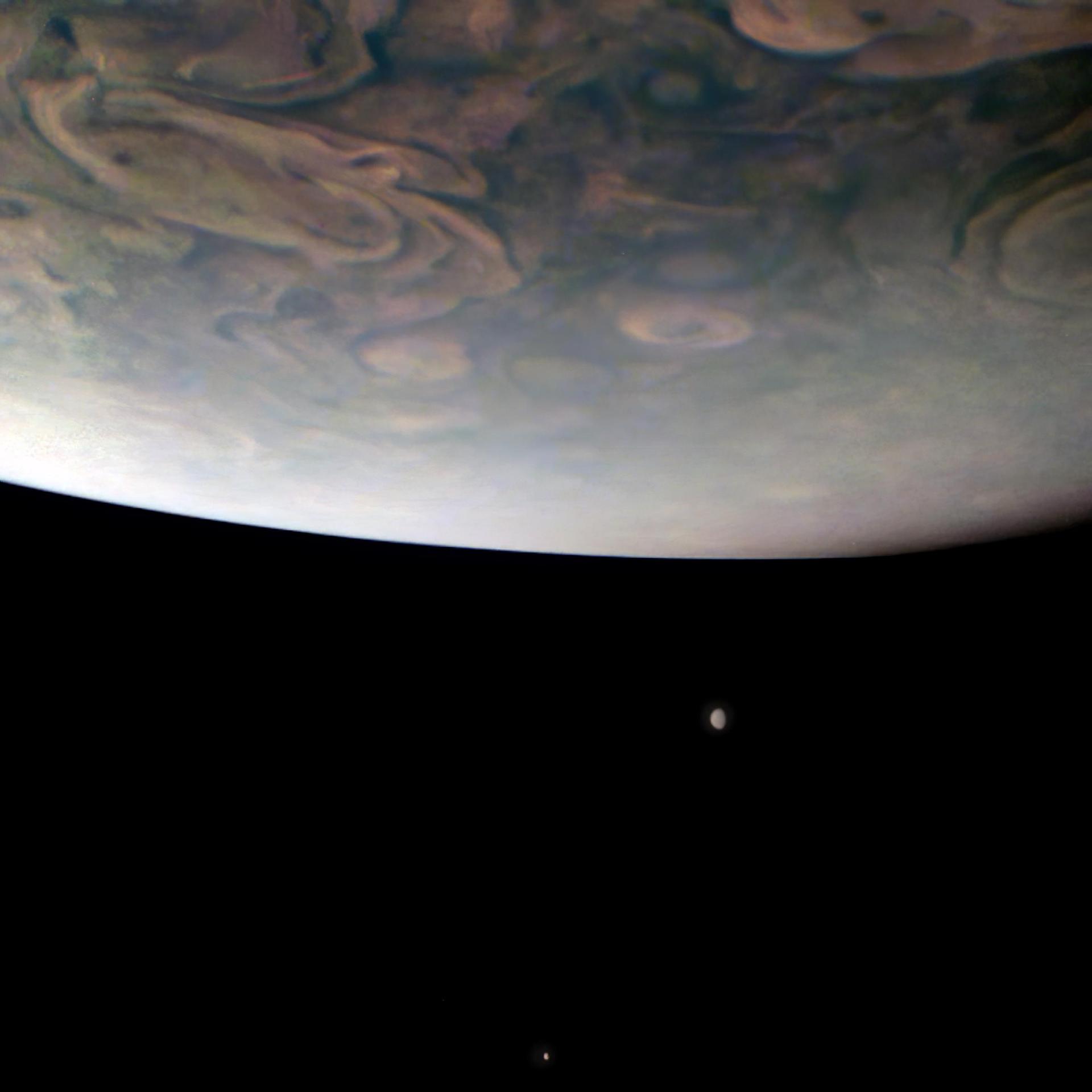Observing Jupiter: A Guide for Stargazers
For centuries, the massive planet Jupiter has been a captivating subject for astronomers and sky enthusiasts alike. Its presence in the night sky is unmistakable, shining brightly and often outshined only by the Moon, Venus, and sometimes Mars when it is at its closest to Earth. Even from a distance of over 365 million miles (587 million kilometers) at its nearest approach, Jupiter’s brilliance is evident. This distance extends to an astonishing 600 million miles (968 million kilometers) when it is furthest away, yet it remains a bright spectacle for those observing from Earth.
Jupiter: The Night Sky’s Majestic Giant
Jupiter’s grandeur is not just in its size but also in its impressive entourage of moons. While there are 95 known moons orbiting this gas giant, the four largest moons—Io, Europa, Ganymede, and Callisto—are the most significant for Earth-based observers. These moons, first discovered by Galileo Galilei in 1610, are referred to as the Galilean moons and can be observed with relatively simple equipment.
For amateur astronomers equipped with a telescope, these moons appear as tiny star-like points aligned close to Jupiter. Even a pair of binoculars can reveal one or two of these moons, offering a glimpse into the dynamic dance of celestial bodies. With a small telescope, an observer can typically see all four Galilean moons, provided they are not obscured by Jupiter itself or by each other.
The Splendor of Jupiter’s Features
Beyond its moons, Jupiter offers a plethora of visual wonders for those equipped with telescopes. The planet’s cloud bands, swirling across its gaseous surface, are a striking feature for observers. With a more powerful telescope, one can even spot large storms, such as the infamous Great Red Spot—a colossal storm larger than Earth that has been raging for centuries. Additionally, the shadows cast by the Galilean moons as they pass between the Sun and Jupiter create a fascinating play of light and shadow across the planet’s face.
A Rewarding Astronomical Activity
For those interested in a more interactive experience, tracking the positions of Jupiter’s moons over time can be an engaging and educational project. By sketching the positions of these moons throughout an evening or across several nights, observers can gain a deeper understanding of their orbits and the mechanics of celestial motion. The Astronomical Society of the Pacific offers an activity guide that can assist budding astronomers in this endeavor, providing a structured approach to documenting these observations.
Jupiter’s Accessibility to Amateur Astronomers
The accessibility of Jupiter to even modest astronomical equipment makes it a popular target for amateur astronomers. Its bright appearance and the visibility of its moons offer an excellent opportunity for beginners to hone their observational skills. Furthermore, the planet’s dynamic atmosphere and ever-changing features ensure that there is always something new to observe, making it a perpetual source of wonder.
Understanding Jupiter’s Importance in the Solar System
Jupiter’s significance extends beyond its visual appeal. As the largest planet in our solar system, it plays a crucial role in the gravitational dynamics of the planetary lineup. Its massive gravitational pull has influenced the orbits of other bodies within the solar system, and it is often regarded as a protective shield, diverting comets and asteroids that might otherwise pose a threat to Earth.
The Gas Giant’s Moons: Potential for Life?
The Galilean moons, particularly Europa, have sparked interest within the scientific community due to the potential for harboring life. Europa’s icy surface is believed to conceal a vast ocean beneath, a tantalizing prospect for astrobiologists searching for extraterrestrial life. This has led to numerous scientific missions aimed at exploring these moons in greater detail, with future missions planned to delve deeper into their mysteries.
Jupiter’s Role in Historical Astronomy
Historically, Jupiter has played a pivotal role in the advancement of astronomy. Galileo’s discovery of its moons provided critical evidence that not everything orbited the Earth, challenging the geocentric model of the universe and supporting the heliocentric model proposed by Copernicus. This marked a significant shift in our understanding of the cosmos and laid the foundation for modern astronomy.
Engaging with the Cosmos: A Call to Action
For those inspired to explore the wonders of the night sky, Jupiter offers an accessible and rewarding target. Whether through casual stargazing or more structured observational projects, the planet provides a gateway to understanding the vastness and beauty of our universe. With resources like the Astronomical Society of the Pacific’s activity guide, even novice astronomers can embark on a journey of discovery, tracing the paths of Jupiter’s moons and uncovering the secrets of this magnificent giant.
In conclusion, Jupiter remains a beacon in the night sky, inviting observers to marvel at its splendor and delve into the mysteries of our solar system. Its bright presence and the visibility of its moons make it a perfect subject for both seasoned astronomers and newcomers alike. As we gaze upon this celestial giant, we are reminded of the endless possibilities that lie beyond our world, urging us to continue our exploration of the cosmos.
For more Information, Refer to this article.




































